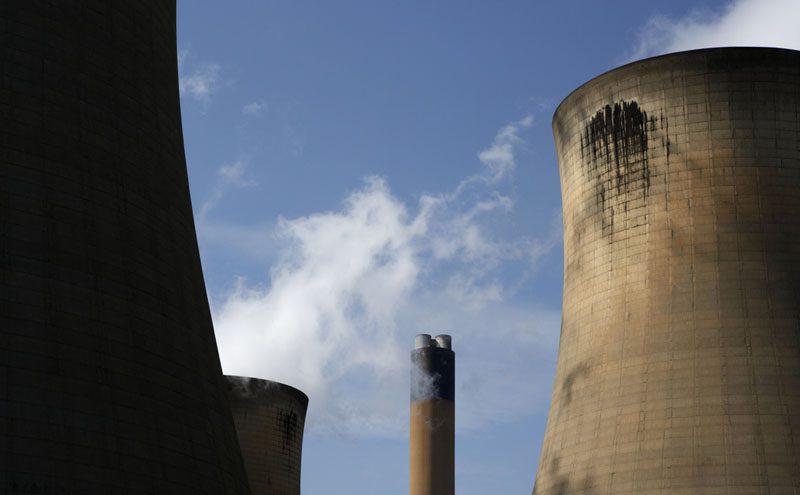
An investigation by Channel 4’s Dispatches that was televised on 14 April has aimed to expose the destruction behind the UK utility Drax’s move to replace coal in its plants with wood fuel, and has seemingly uncovered fresh evidence of hardwood forests being chopped down to serve this purpose. “The devastation of American forests portrayed in the programme shows the true cost to our forests”, say the programme makers, from “the British government’s reckless decision to subsidize this fake clean energy.”
“Drax’s ability to turn our forests into fuel rests on its capacity to hide from the British public the ugly truth of how this industry operates,” said Sasha Stashwick, a senior advocate at the Natural Resources Defense Council. “This investigation is so threatening to Drax because it lets the British public see with their own eyes the reality of this dirty and destructive industry. Drax’s `green’ image was ground to a pulp.”
As the programme explained, the UK’s reliance on biomass puts some of the world’s most ecologically valuable forests at risk, with the devastation hidden across the Atlantic Ocean and far from the British public. As the new on-the-ground investigation showed, in parts of the Southern US unique hardwood forests that are massive storehouses of carbon are being clearcut, manufactured into wood pellets, and loaded on ships destined for the British utility’s power plants.
“The forests of the Southern US, which are some of the most biodiverse in the world, are being devastated by an industry promoting itself as a solution to climate change,” said Adam Colette of Dogwood Alliance. “Drax can no longer deny that whole trees are going into the facilities that manufacture their wood pellets. That must stop. At this point, the evidence is so overwhelming that the UK Government is looking ridiculous in their denial of the truth.”
Drax’s ability to traffic on a “green” image and align itself with clean energy sources like wind and solar depends on people remaining in the dark about the true costs of biomass. That myth is now debunked.
Contrary to Drax’s assertion that this is an atypical harvest, say the programme makers, the investigation conducted by Dispatches is just further evidence of what has been documented over multiple years of on-the-ground investigations into the unsustainable harvesting practices used by Enviva, the top pellet supplier to Drax. These American forests are typically privately owned and not subject to the same protections as those in Britain. The forests are biodiversity treasure troves, yet are being logged at four times the rate of that of the Amazon. This is all allowed under UK regulations and Drax’s sustainability standards.
Meanwhile, under the guise of “renewable energy,” the UK government has handed energy giants like Drax billions of pounds to convert their coal plants to burn wood, turning the UK—with just 1 percent of the world’s population—into the largest importer of wood pellets in the world. More than 90 percent of the wood pellets exported from the US go across the Atlantic to the UK.
But there is nothing renewable about it. Recent research from Chatham House and the Massachusetts Institute of Technology has shown that burning wood to generate electricity actually releases more carbon pollution than burning coal.
“Drax’s burning of wood pellets releases more CO2 into the air than the coal it replaced”, noted David Carr, General Counsel at the Southern Environmental Law Center. “In fact, a recent estimate shows that Drax emitted close to 12 million tons of CO2 from burning wood in 2017. These emissions are equal to the UK’s annual goal for reducing carbon emissions. Clearly this dirty energy play is a climate disaster.”
Cutting down trees and burning them in power plants puts millions of tons of carbon pollution in the air immediately — at levels comparable to fossil fuels. Industry lobbyists argue new trees will recapture that carbon, but that regrowth takes decades, and in the meantime those carbon emissions will do real damage. In many places, the forests may never return. Concurrently, wind and solar power keep getting cheaper; without government subsidies Drax’s biomass endeavor makes no economic sense, either.
Far from a one-off, these unsustainable harvesting practices, carried out in some of the most stunning and ecologically valuable forests in the Southern US, are part of a sustained pattern for Drax and its suppliers such as Enviva. It’s time to revoke Drax’s membership in the renewables club.
Biomass producers claim they are only burning forestry “wastes and residues.” Yet, the Dispatches investigation revealed that to be a lie. It showed mature forests being felled, chopped and transported to the pellet plants. The British public now faces a simple choice: continue to allow Drax to burn acres of forest or take a stand and say “enough is enough”?







